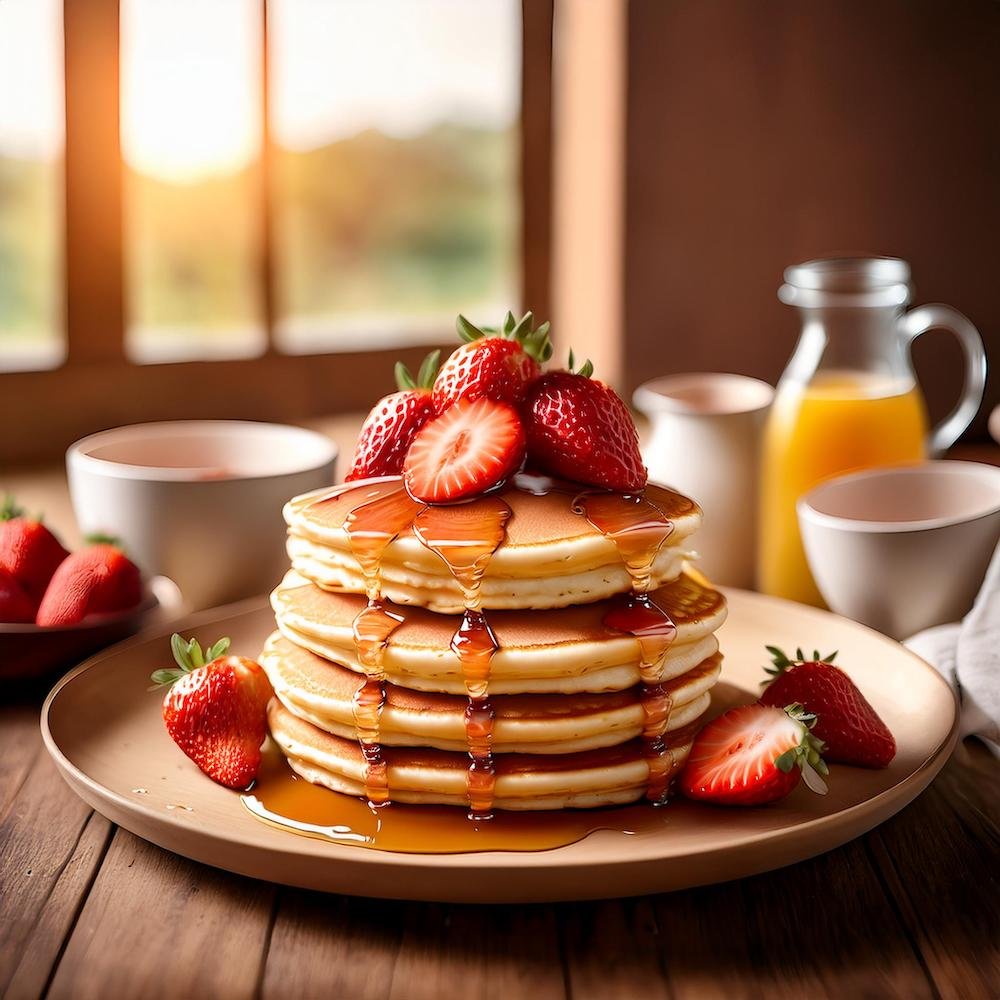What Does Adding Sugar to Pancake Mix Do? Sugar is a simple yet transformative ingredient in pancake mix. While it might seem like a minor addition, sugar plays a significant role in enhancing the flavor, texture, and appearance of your pancakes. Whether you’re using a store-bought mix or making batter from scratch, understanding how sugar affects your pancakes can help you create the perfect stack every time.
In this article, we’ll explore the science behind sugar in pancake mix, its effects on sweetness, texture, and browning, and share tips for incorporating it into your recipes effectively.
The Role of Sugar in Pancake Mix
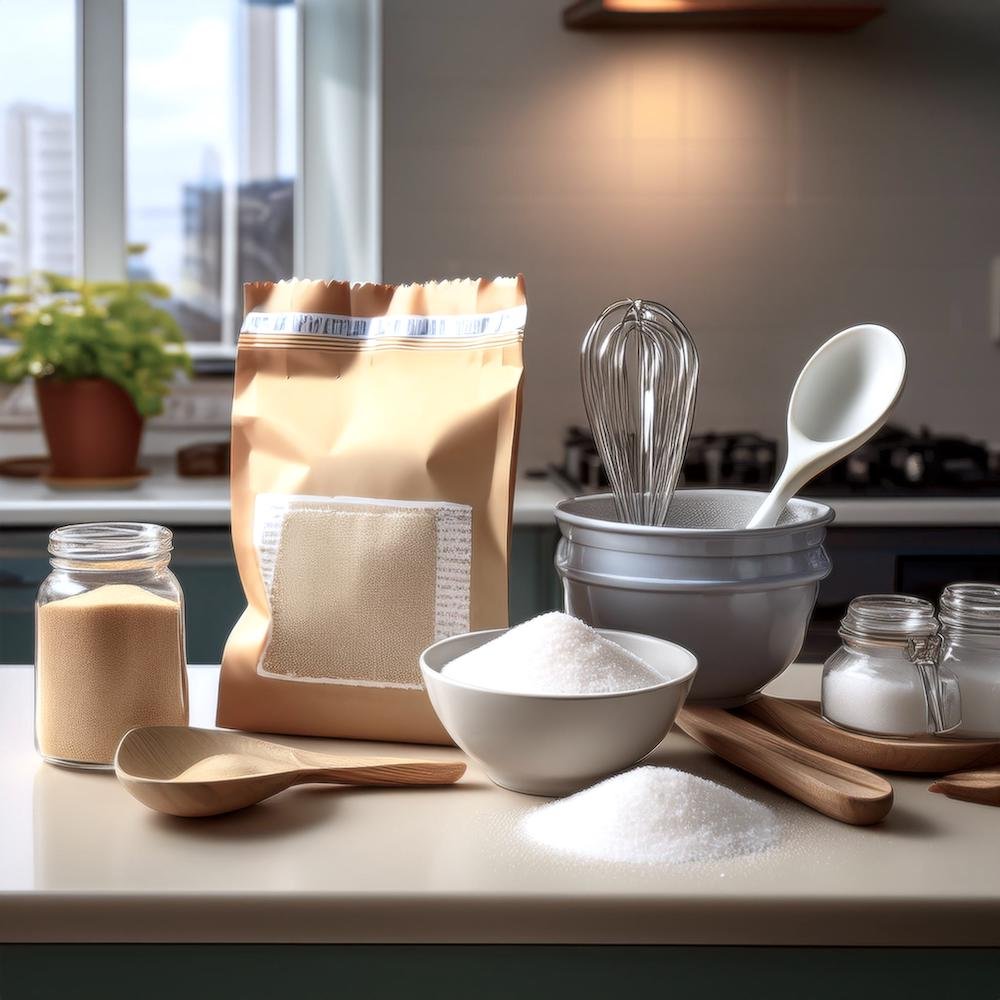
Adding sugar to pancake mix isn’t just about making your pancakes sweeter—it has multiple effects that contribute to their overall quality.
1. Enhances Sweetness
- Why It Matters: Sugar adds a subtle sweetness that balances the savory notes of other ingredients like salt and butter.
- Result: Pancakes taste more rounded and satisfying, even without toppings.
2. Aids in Browning
- Why It Matters: Sugar contributes to caramelization during cooking, resulting in a golden-brown exterior.
- Result: Pancakes not only taste better but also look more appetizing.
3. Contributes to Texture
- Why It Matters: Sugar interacts with liquids and proteins in the batter to retain moisture and create a tender crumb.
- Result: Pancakes feel soft and fluffy with every bite.
4. Balances Flavors
- Why It Matters: Pancakes often contain tangy or salty ingredients like buttermilk or baking soda. Sugar helps counterbalance these flavors.
- Result: The batter has a more harmonious taste, enhancing both the pancake and its toppings.
Pro Tip: Sugar Level Matters
- For lightly sweet pancakes, use 1–2 tablespoons of sugar per cup of flour.
- For dessert-style pancakes, increase the amount to suit your taste preferences.
How Sugar Affects Pancake Texture
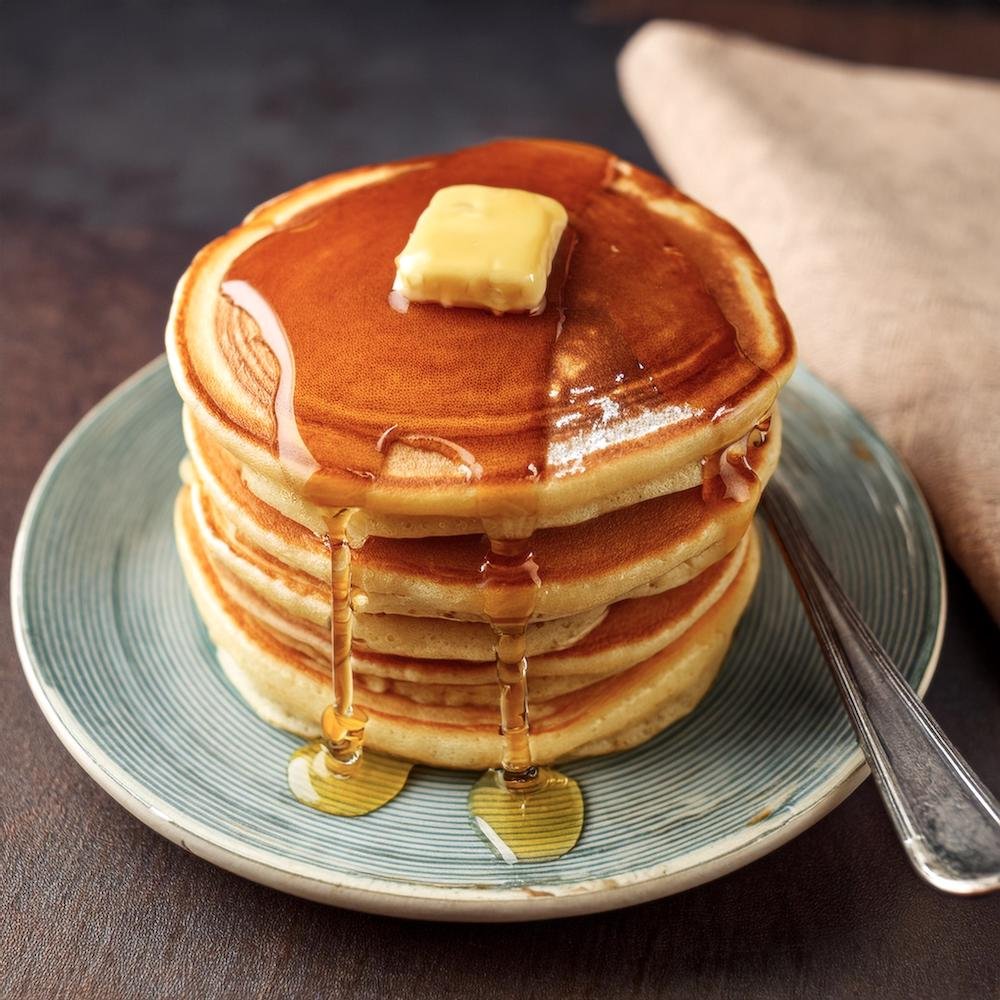
The texture of a pancake is one of its defining characteristics, and sugar plays a crucial role in achieving the ideal balance of softness, moisture, and tenderness.
1. Retains Moisture
Why It Happens
- Sugar is hygroscopic, meaning it attracts and retains moisture from the environment and the batter.
The Result
- Pancakes remain moist and soft rather than dry or crumbly, even after cooling.
2. Limits Gluten Formation
Why It Happens
- Sugar competes with flour for liquid in the batter, slowing down the development of gluten.
- Reduced gluten results in a tender texture, rather than a chewy or dense pancake.
The Result
- Pancakes are easier to cut and bite into, with a light and fluffy crumb.
3. Prevents Toughness
Why It Happens
- Sugar disrupts the protein structure in the batter, making it harder for the batter to become overly elastic or tough.
The Result
- A smoother and more delicate mouthfeel, perfect for pairing with soft toppings like whipped cream or syrup.
4. Improves Batter Consistency
Why It Happens
- Sugar dissolves into the liquid ingredients, creating a smoother batter that pours more evenly onto the griddle.
The Result
- Pancakes cook more evenly and hold their shape better during flipping.
Pro Tip: Balance Sugar with Other Ingredients
- When adding sugar, ensure the ratio of wet to dry ingredients is maintained. Too much sugar can make the batter overly thin, which might affect the pancakes’ structure.
The Effect of Sugar on Pancake Flavor
Sugar is a key ingredient that significantly enhances the flavor of pancakes. Its presence in the batter contributes to the overall taste profile, balancing sweetness with other flavor elements.
1. Adds Sweetness
Why It Matters
- Sugar directly influences the sweetness of the pancakes, making them more enjoyable even without syrup or toppings.
The Result
- Pancakes have a subtle, underlying sweetness that complements toppings like fresh fruit, honey, or butter.
2. Balances Tangy and Salty Ingredients
Why It Matters
- Ingredients like buttermilk, baking soda, or salt add tang or savory notes to the batter. Sugar counterbalances these flavors.
The Result
- A harmonious flavor profile where sweetness, saltiness, and tanginess are perfectly blended.
3. Enhances Toppings
Why It Matters
- Pancakes with a hint of sweetness pair better with toppings like syrups, jams, or even savory items like bacon.
The Result
- The flavors of the pancake and the toppings complement each other, creating a more indulgent eating experience.
4. Subtle Caramel-Like Taste
Why It Matters
- As sugar caramelizes during cooking, it creates complex, slightly nutty flavors that enhance the pancakes’ taste.
The Result
- Pancakes develop a rich, toasty flavor that makes them irresistible even without additional sweeteners.
Pro Tip: Customize the Sweetness
- Add sugar to taste based on your preferred level of sweetness and the toppings you plan to use. For a lightly sweet pancake, stick to 1–2 tablespoons per cup of flour.
Does Sugar Make Pancakes Brown Better?
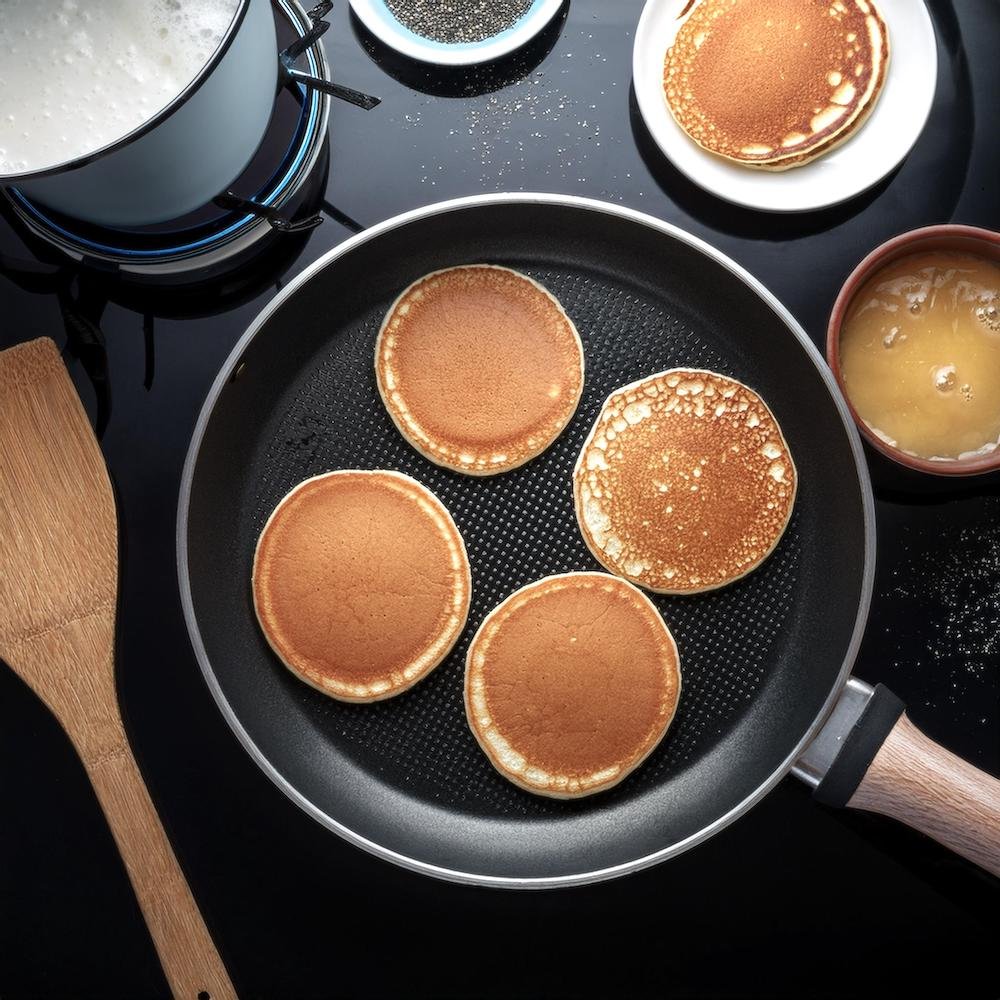
Sugar doesn’t just enhance the flavor of pancakes; it also plays a vital role in achieving that beautiful golden-brown color. This is thanks to the caramelization process and the Maillard reaction.
1. Caramelization of Sugar
Why It Happens
- When exposed to heat, sugar molecules break down and caramelize, creating a golden-brown hue.
The Result
- Pancakes develop a visually appealing exterior with a slightly crispy edge, adding both texture and flavor.
Pro Tip
- Use moderate heat when cooking pancakes with added sugar to prevent burning.
2. The Maillard Reaction
Why It Happens
- Sugar interacts with amino acids in the batter (from ingredients like eggs or milk), producing browning and enhancing flavor complexity.
The Result
- Pancakes take on a rich, toasty flavor and an even, golden-brown color.
3. Even Cooking
Why It Happens
- Sugar helps distribute heat more evenly throughout the batter, promoting consistent browning across the pancake’s surface.
The Result
- A stack of evenly golden pancakes that look and taste professional.
4. Balance Is Key
Potential Drawback
- While sugar aids browning, too much can cause pancakes to brown too quickly or even burn before the inside is fully cooked.
How to Avoid It
- Use 1–2 tablespoons of sugar per cup of flour to balance sweetness and browning without overdoing it.
- Keep the griddle or pan at medium heat for optimal results.
Pro Tip: Test the First Pancake
- Cook a test pancake to ensure the batter’s sugar level and griddle temperature are just right for achieving a golden-brown finish without burning.
Tips for Adding Sugar to Pancake Mix
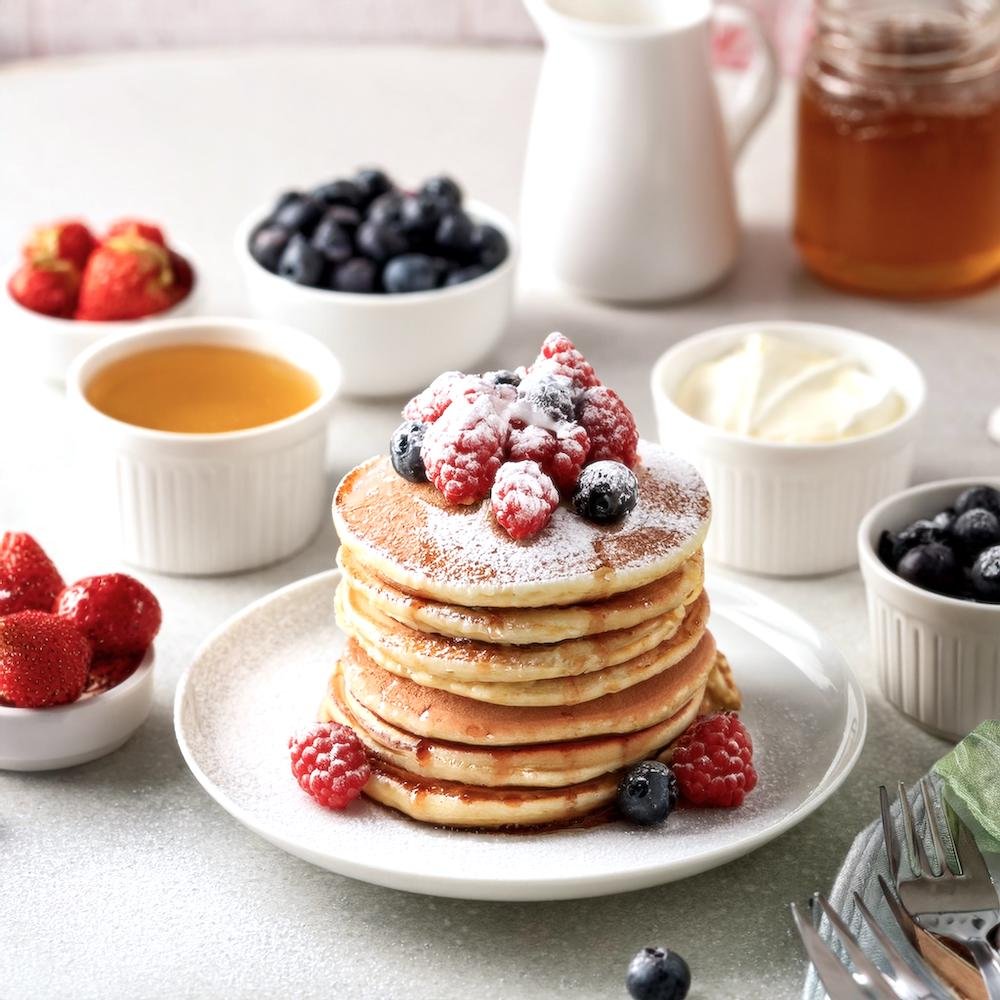
Adding sugar to pancake mix might seem straightforward, but a few tips can help you achieve the perfect balance of flavor, texture, and appearance. Here’s how to incorporate sugar effectively.
1. Choosing the Right Type of Sugar
1.1. Granulated Sugar
- Best For: Classic pancakes with subtle sweetness.
- Why Use It: Dissolves easily in the batter and contributes to even browning.
1.2. Brown Sugar
- Best For: Pancakes with a deeper, molasses-like flavor.
- Why Use It: Adds moisture and a slight chewiness to the pancakes.
1.3. Powdered Sugar
- Best For: Thin batters or lightly sweetened pancakes.
- Why Use It: Blends quickly without lumps, ideal for smooth batters.
1.4. Alternative Sweeteners
- Examples: Honey, maple syrup, or coconut sugar.
- Why Use Them: Great for unique flavors or healthier options. Adjust the liquid content in the batter when using liquid sweeteners.
2. Adjusting Sugar Levels for Different Recipes
Lightly Sweet Pancakes
- Use 1 tablespoon of sugar per cup of flour for a subtle sweetness that complements savory toppings.
Dessert-Style Pancakes
- Add 2–3 tablespoons of sugar per cup of flour for pancakes that can stand alone as a sweet treat.
Customizing to Taste
- Gradually increase sugar based on your toppings; sweeter batters pair well with unsweetened toppings like fresh fruit or yogurt.
3. Balancing Sweetness with Other Ingredients
Salt
- Add a pinch of salt to enhance the sweetness and overall flavor.
Tangy Ingredients
- Sugar balances the tanginess of buttermilk, yogurt, or baking soda in the batter.
Spices
- Combine sugar with cinnamon, nutmeg, or vanilla for a warm, aromatic twist.
4. Mixing Sugar Into Pancake Batter
Dry Ingredients
- Mix sugar thoroughly with flour, baking powder, and other dry ingredients before adding the wet ingredients.
Wet Ingredients
- If using liquid sweeteners like honey or maple syrup, mix them with the wet ingredients for even distribution.
5. Cooking Pancakes with Sugar
Griddle Temperature
- Keep the griddle at medium heat to avoid burning the sugar while ensuring even browning.
Flip Timing
- Watch for bubbles forming on the surface before flipping to avoid undercooking.
Pro Tip: Experiment with Variations
- Try combining granulated and brown sugar for added complexity. Adjust sweetness to match your desired pancake style, from breakfast classics to dessert-inspired creations.
Frequently Asked Questions (FAQs)
Why add sugar to pancake mix?
Adding sugar to pancake mix enhances the flavor, texture, and appearance of pancakes:
Flavor: Sugar provides sweetness and balances the savory or tangy ingredients in the batter.
Texture: It helps retain moisture, making pancakes softer and more tender.
Appearance: Sugar aids in caramelization and the Maillard reaction, creating golden-brown, visually appealing pancakes.
What happens if you don’t add sugar to pancakes?
If you don’t add sugar to pancakes:
Flavor: They may taste bland, relying on toppings for sweetness.
Texture: Pancakes might be less tender, as sugar helps retain moisture.
Appearance: They may not brown as evenly or achieve a golden color.
Omitting sugar works well for savory pancakes or less sweet options.
What makes pancakes more fluffy?
Several factors contribute to fluffy pancakes:
Leavening Agents: Baking powder and baking soda create air bubbles that make the pancakes rise.
Resting the Batter: Letting the batter sit for 5–10 minutes allows the leavening agents to activate and the flour to hydrate.
Gentle Mixing: Overmixing develops gluten, leading to dense pancakes. Leave some lumps in the batter.
Buttermilk or Yogurt: Their acidity reacts with baking soda, enhancing the rise.
What is the secret to good pancakes?
The secret to good pancakes lies in a combination of ingredients and techniques:
Balanced Ingredients: Use the right ratio of wet to dry ingredients for a thick, pourable batter.
Leavening Agents: Include baking powder or soda for fluffiness.
Proper Mixing: Mix gently to avoid overdeveloping gluten.
Griddle Temperature: Cook pancakes on medium heat for even cooking and golden-brown color.
Resting the Batter: Allow the batter to rest for a few minutes before cooking.
Toppings: Pair pancakes with complementary toppings like butter, syrup, or fruit for added flavor.
Suggested Internal Links:
- Sweet Cream Pancakes
Provides readers with a complementary pancake recipe, adding depth to their pancake-making knowledge. - Why Are IHOP Pancakes So Fluffy?
Explores techniques for achieving fluffy pancakes, aligning with the article’s focus on pancake preparation. - Can I Add Cream to Pancake Batter?
Discusses another ingredient tweak for pancakes, adding variety to the topic. - What Is Sweet Cooking Cream?
Offers insights into ingredients that enhance sweetness, complementing the discussion on sugar. - CMS Pancake Breakfast
Links to a pancake-themed article, providing readers with ideas for serving pancakes creatively.
Conclusion
Adding sugar to pancake mix might seem like a small change, but it has a significant impact on flavor, texture, and appearance. From enhancing sweetness and tenderness to creating a golden-brown finish, sugar plays a vital role in crafting the perfect pancake. Whether you’re making lightly sweetened breakfast pancakes or indulgent dessert-style stacks, understanding how sugar works can help you customize your recipes to your taste.
By experimenting with different types of sugar, adjusting sweetness levels, and balancing other ingredients, you can elevate your pancakes to a whole new level. So grab your favorite pancake mix or create one from scratch, and enjoy the magic that a little sugar can bring to your breakfast table. Happy flipping!
Discover more mouthwatering recipes on our Web Site ! Stay connected and get inspired by following us on Facebook, Instagram, Pinterest, and Twitter for the latest updates!
